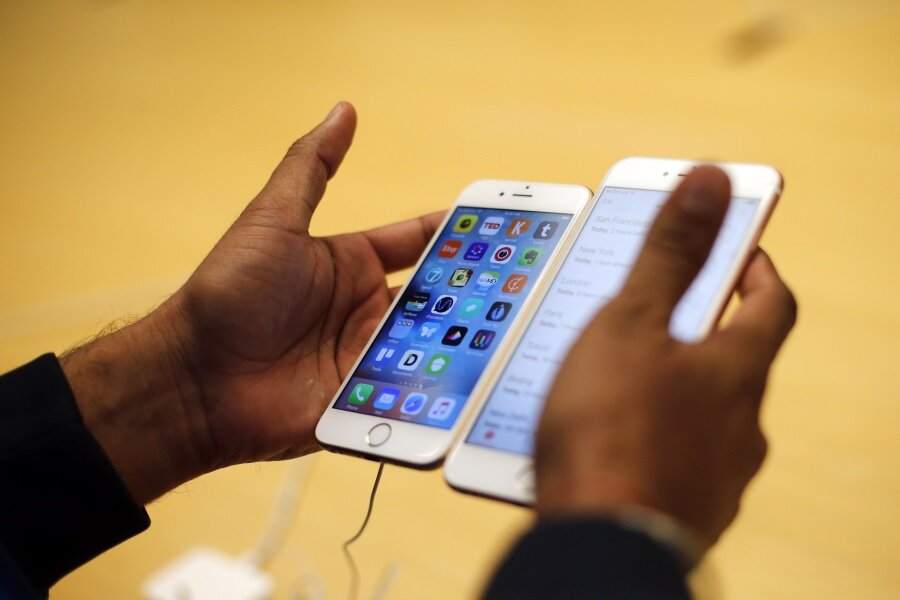Ad-blocking in iOS 9 saves money, but starves publishers
Loading...
One of the biggest changes in Apple’s iOS 9 software, which was released September 16 for iPhones and iPads, was the company's decision to now allow for mobile ad-blocking software. The operating system’s built-in Safari browser supports extensions that can block advertising images, scripts, cookies (small bits of software that sites install in your browser), and more.
Instead of seeing ads at the top and sides of a web page (and maybe a video that auto-plays before you can read an article), users will see nothing but the content itself.
It turns out that ad-blocking in iOS 9 is extremely effective, The New York Times reported on Friday. Tech correspondents Gregor Aisch, Wilson Andrews, and Josh Keller put multiple ad blockers to the test on the iPhone 6, and found that more than half of the content on the top 50 news websites comes from advertising, rather than editorial content. That means that users who enable ad-blocking software on their iPhone can expect news sites to load more than twice as fast on average, since all the advertising content will be stripped away.
The worst offender was Boston.com’s mobile site, which took just 8 seconds to load editorial content, but more than 30 seconds to load large video ads over a typical 4G LTE cellular connection. The New York Times’s own mobile site took 4.3 seconds to load editorial content and 2.5 seconds to load advertising, while The Guardian’s mobile site had the most favorable ratio, taking 6.8 seconds to load editorial content and just 0.2 seconds to load advertising.
The testers estimated that it costs about a penny to download a megabyte of data on the typical American cellphone plan. That means that a user who visited Boston.com once a day for a month would save about $9.50 by turning on ad-blocking software.
In addition to speeding up page load times and potentially saving users money, ad-blocking software may also slightly improve phones’ battery life and help protect privacy by preventing tracking cookies and other bits of code that gather data from loading.
That said, publishers of websites that run advertisements say almost unanimously that desktop and mobile ad-blocking threatens their existence. Publishers depend on advertising revenue to finance their content – whether that’s news coverage or online videos – and by blocking ads consumers are starving websites of the income they need to keep the lights on, many site owners say. PageFair, a Dublin-based media and advertising firm, estimated in August that publishers will lose more than $22 billion in revenue in 2015 thanks to ad-blockers.
Ad-blocking proponents say the software protects user privacy and encourages advertisers to create ads that are simpler and less invasive. In the meantime, some sites have tried partnering up with ad-blocking companies to allow “non-intrusive” ads, and even asking nicely.








